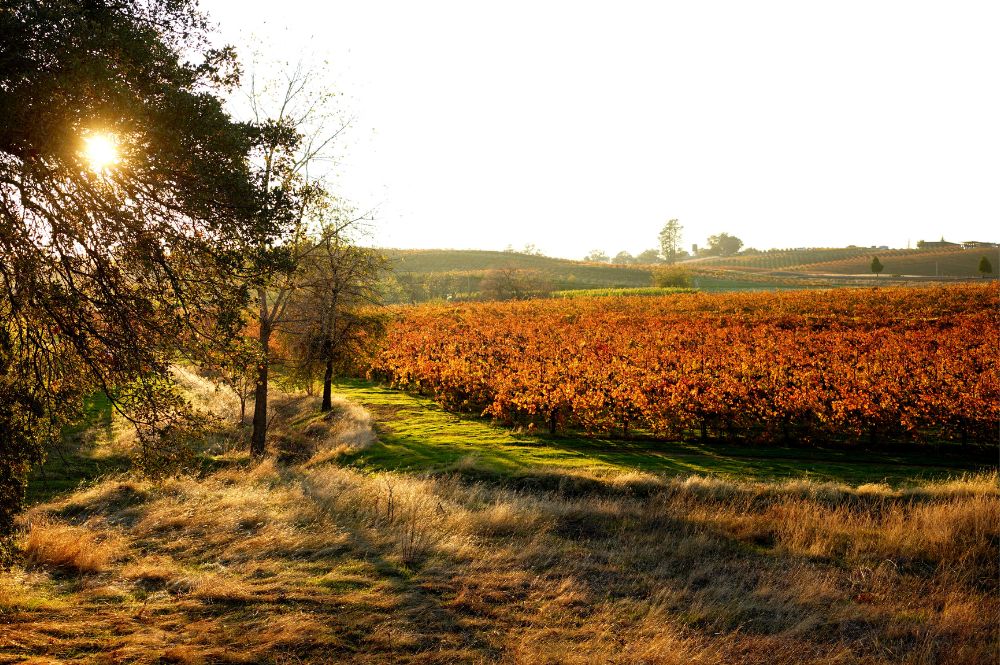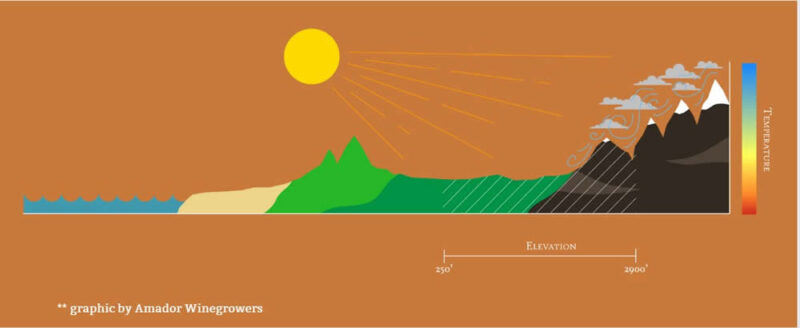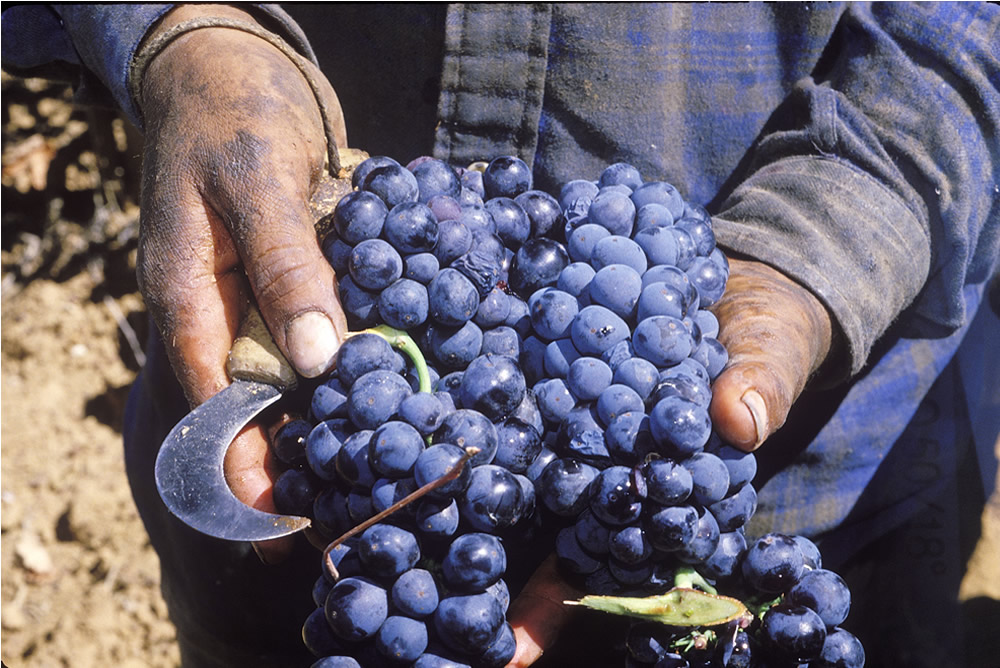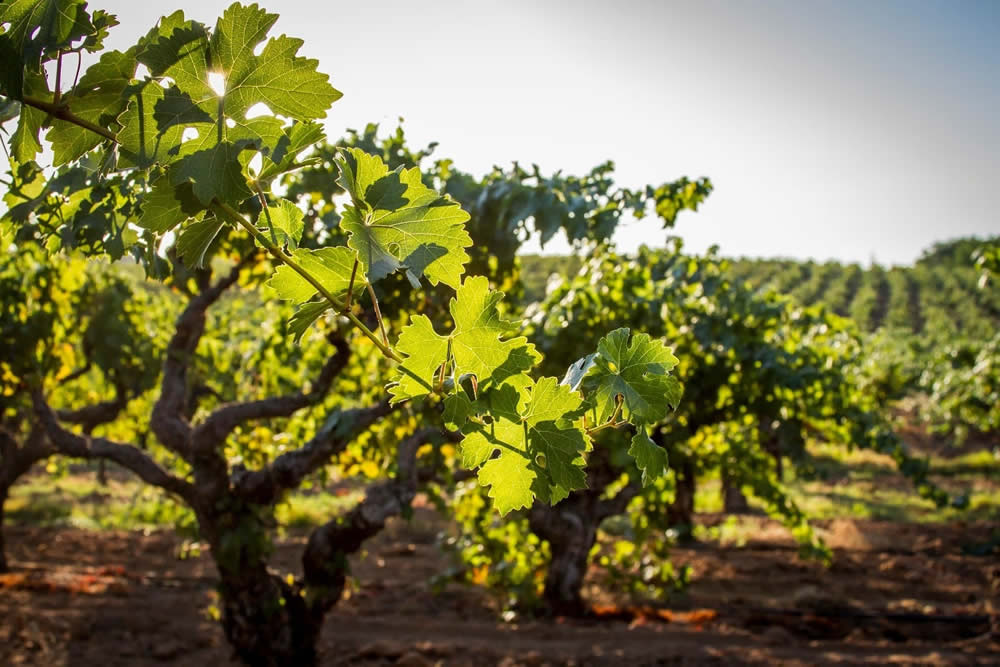About Our Region
Welcome to Amador Wine Country! Located about 100 miles east of Napa Valley, you’ll find Amador in the rolling foothills of the Sierra Nevada’s and snow-capped Tahoe mountains. This wine region is steeped in history and is widely claimed to be the first wine trail in California, as explorers from all over the world came to the region after the discovery of Gold in the mid-1800s. Many of the vineyards from the Gold Rush era survived, including the Deaver Mission Vineyard from the 1850s and the Original Grandpère Vineyard, planted in 1869, which is the oldest documented zinfandel vineyard in California.
Amador County is renowned for its Heritage Zinfandel wines from the old vines that have been dry-farmed and cultivated for over 150 years. However, staying true to the adventurous spirit of this gold rush region, winemakers continue to explore the rich soils and unique terroir of these lands and have found incredible success with Italian, Rhone, and Iberian varietals, including Barbera, Sangiovese, Syrah, Grenache, Vermentino, Tempranillo, and Aglianico.

Our History
California’s nascent wine industry took flight during the Gold Rush of the 1850s, amid the rugged western foothills of the majestic Sierra Nevada mountain range. As fortune seekers, many of them European, flocked to the Sierras to prospect for gold, small wineries arose to help slake their thirst. Within a few decades, there were over 100 wineries in the area known as the Mother Lode, more than any other region of California. Some of the vineyards planted during that era survive to this day.
The decline of gold mining at the end of the 19th-century, followed by the advent of Prohibition in 1920, devastated this frontier wine community, which remained dormant until the late 1960s. Then, a new generation of pioneers began migrating to the Gold Country’s Amador County, this time drawn by the region’s rolling, sun-drenched hillsides, warm daytime temperatures, and volcanic, decomposed granite soils – ideal conditions for producing top-quality wine grapes. When their robustly flavored wines, especially zinfandel, began attracting the attention of wine lovers throughout California and the U.S., the historic Sierra Foothills wine region was reborn.
Today, where gold once reigned, some forty wineries produce a new treasure: superb wines which have earned Amador County international acclaim.
Climate
Amador’s warm climate, high solar radiance (what the French call luminosity) and low humidity promote the full ripening of our grapes. Classified as a high Region 3 in the UC Davis heat summation scale, Amador is comparable to St. Helena – but cooler than Calistoga – in northern Napa Valley. While Amador heats up earlier in the day than those appellations, it rarely exceeds 100 degrees during the growing season, a frequent occurrence in St. Helena and Calistoga. Equally important, temperatures typically drop 30-35 degrees in the evening as breezes cascade down from the Sierras. This rapid cooling helps the grapes retain the acidity essential to balanced wines.


Appellations
Located only 40 miles east of Sacramento and 100 miles from San Francisco in the beautiful Sierra Foothills. Amador County contains both the Shenandoah Valley AVA and Fiddletown AVA.
Shenandoah Valley AVA: The Shenandoah Valley AVA includes portions of Amador & El Dorado County and is a sub-region of the Sierra Foothills AVA. Established in 1983, this AVA ranges in elevation from 1,000 to 2,000 feet above sea level.
Fiddletown AVA: The Fiddletown AVA was established in 1983 and is a sub-region of the Sierra Foothills AVA. Starting at an elevation of 1,500 and reaching to 2,500 ft above sea level. The Fiddletown AVA accounts for about 20% of the wine produced in Amador County.
Terroir
 Soil
Soil
Most Amador vines are planted in volcanic Sierra Series soils – primarily sandy clay loam derived from decomposed granite. These friable, moderately dense soils effectively retain Amador’s 36 to 38 inches of annual rainfall, enabling most growers to dry-farm their vineyards.
Elevation
Most vineyards in Amador are planted between 1,000 to 3,000 feet in elevation. Many of the higher-elevation vineyards are within the Fiddletown AVA.
Climate
Amador has a Mediterranean climate. While temperatures rise during the day the cool breeze flowing down from the Sierra mountains at night causes a 30+ degree diurnal temperature shift. This rapid cooling helps the grapes retain the acidity essential to balanced wines. Sitting above the fog line decreases the moisture in the air and lowers disease pressure.

Grape Varieties
Amador County was once identified almost exclusively with Zinfandel. During the past 20 years, Amador Vintners have begun producing a diverse array of varieties, especially those of Italian and southern French origin. While Zinfandel, with over 2,000 acres, remains Amador’s signature variety, the region’s wineries also vinify superb examples of the below varietals.
Signature Varietals: Zinfandel, Barbera, Syrah, Sangiovese, and Viognier
Other Varietals Includes: Aglianico, Albarino, Alicante Bouchet, Cabernet Franc, Cabernet Sauvignon, Carignan, Charbono, Chardonnay , Chenin Blanc , Chenin Blanc, Dolcetto, Fiano, Gamay, Godello, Graciano, Grenache, Lagrein, Malbec, Malvasia Bianca, Marsanne, Merlot, Mission, Montepulciano, Mourvedre, Muscat, Nebbiolo, Nero d’Avola,Petit Verdot, Petite Sirah, Pinot Grigio, Pinot Noir, Roussanne, Sauvignon Blanc, Schioppettino, Semillon, Tannat, Tempranillo, Teroldego, Touriga, Trebbiano, Treixadura, and Verdelho.
Old Vines
The majority of Amador’s vines are head-trained, spur-pruned and either own-rooted or on low vigor rootstocks like St. George, which provide a natural check on yields. Trained vines are primarily on bi-lateral cordons with vertical trellising. Severe pruning, cluster thinning, and dropping crop when necessary keep yields small, generally four tons per acre or less. Amador boasts one of the highest percentages of organically farmed vineyards of any wine region in California and, probably as a result of dry-farming, has been little affected by phylloxera.
Amador’s production of intensely flavored red wines also reflects its high percentage of old vines: roughly 600 acres are 65 years or older, including several vineyards dating to the 19th century. These deeply rooted, head-trained vines, found in vineyards such as Deaver, Esola, Fox, Ferrero, Grandpere and Lubenko, yield tiny crops of small-berried grapes, which produce the heady zinfandels for which Amador is renowned.

